
I’d always had a curiosity about Kangaroo Island but never had enough reason to go there, until now that is, as it has four interesting lighthouses which thankfully necessitated a visit.
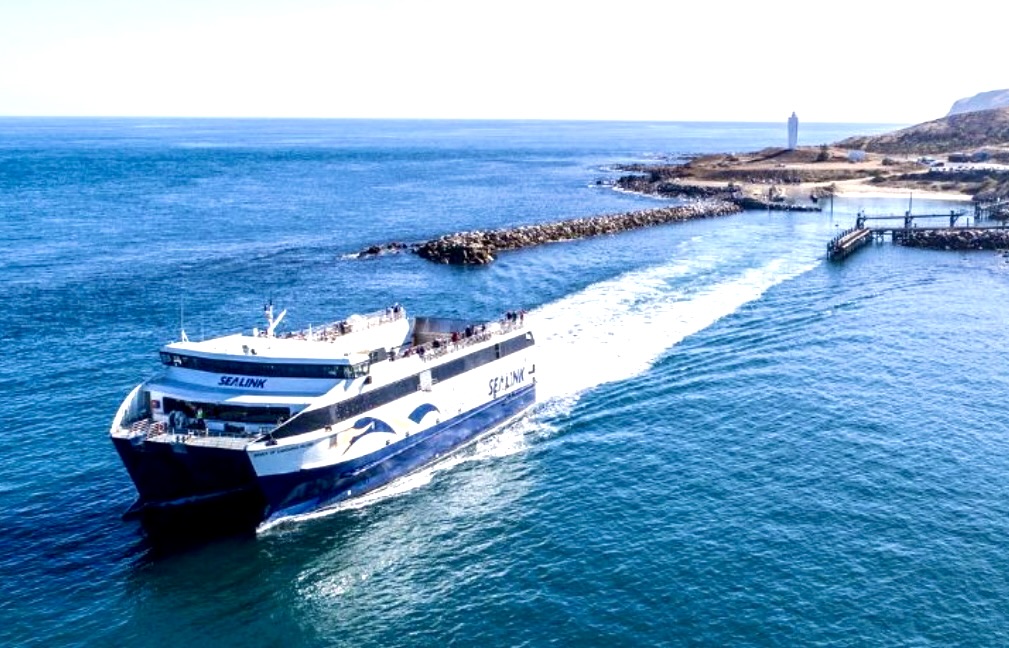

I’m not sure what I was expecting but don’t think it was what I found as it is an island of contrasts, the weather which can radically change in a few minutes, the tranquil aqua ocean can suddenly become a dark and dangerous monster, the landscape can suddenly go from rolling green hills to arid scrub and even the lighthouses are unique and distinctly different from each other. The other contrast is the people, the true islanders who in many cases have been there for 4 or 5 generations are a humble and unassuming lot whereas the newbies, the ones who have established boutique wineries and five-star resorts are an entirely different breed. The other locals, the animals are also an exercise in contrasts, from the ever friendly and playful dolphins to the cold-eyed menace of the great whites, from the primordial giant goannas to the cuddly koalas, in fact it’s a mystery how everything seems to coexist.

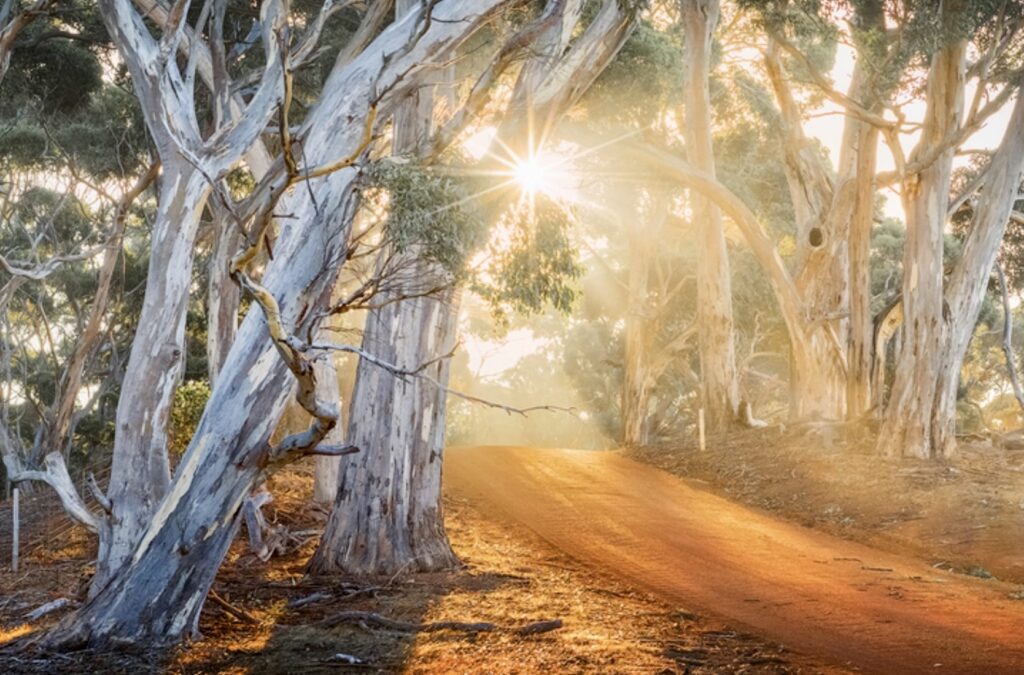
Without doubt it’s an odd but enchanting place and one with an equally weird history.
Long before European discovery this island held sacred significance for Aboriginal people who knew it as “Karta”, the Island of the Dead. For an astonishing 16,000 years, Indigenous communities thrived here but for reasons unknown, somewhere between 2,000 and 4,000 years ago, they departed, taking their stories with them and leaving only archaeological evidence of their presence.
The island’s modern chapter began on March 23, 1802, when Captain Matthew Flinders aboard HMS Investigator dropped anchor near what he would name Kangaroo Head. His crew, weary from months at sea, were astounded by the abundance of large grey kangaroos that showed no fear of humans—easy prey for sailors desperate for fresh meat. Flinders christened it “Kanguroo Island,” unknowingly naming what would become Australia’s third-largest island after a subspecies found nowhere else on earth.
Thirty-four years later, Kangaroo Island made history again when Kingscote was established at Reeves Point, becoming South Australia’s first colonial settlement. For a brief moment, this small coastal town was even considered as the colony’s capital, though the island’s isolation and limited freshwater resources eventually made mainland Adelaide the more practical choice.
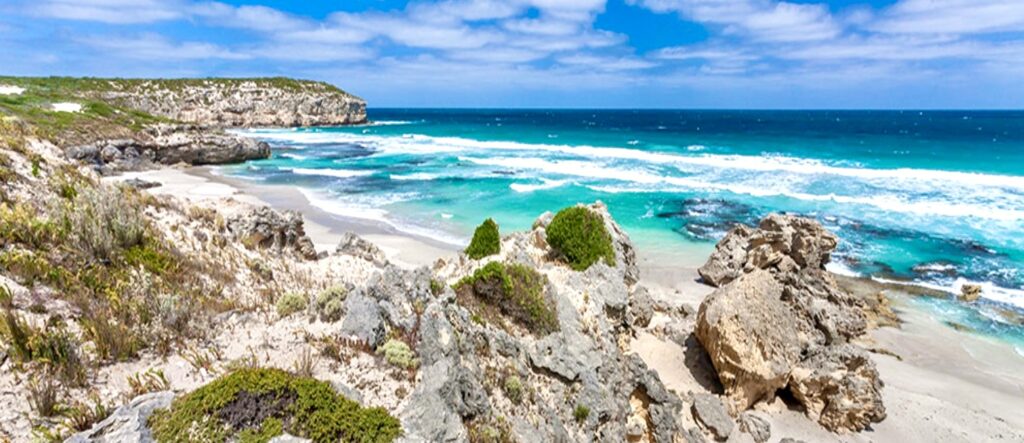
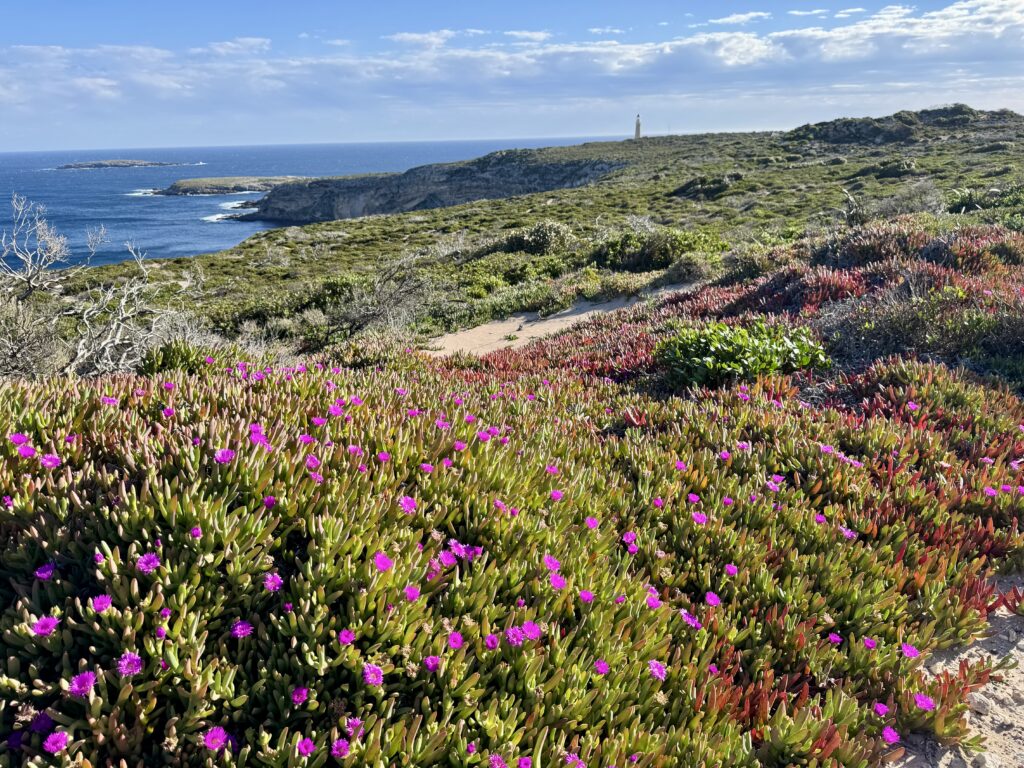
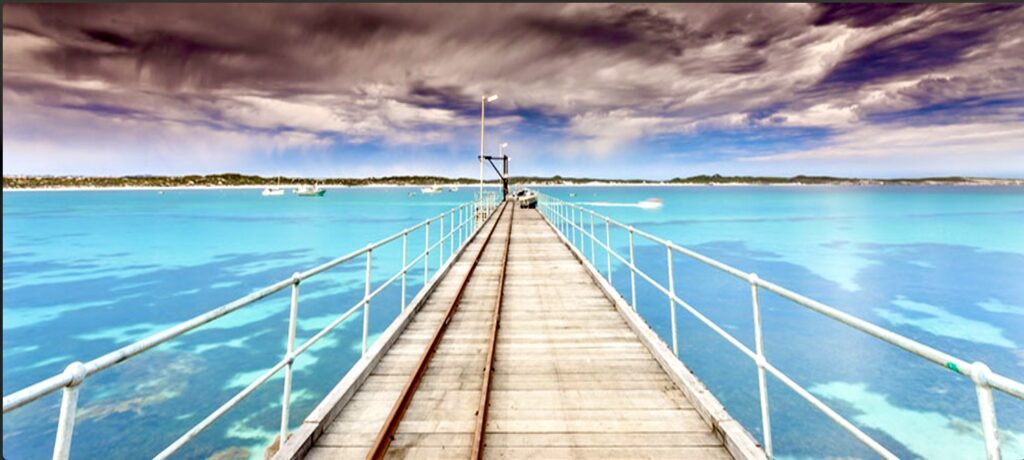

The waters surrounding this island paradise told a darker tale. Over 80 vessels met their doom on the treacherous reefs and in the powerful currents that guard Kangaroo Island’s shores. Ships like the Loch Sloy in 1899 and the Portland Maru in 1935 became permanent residents of the seabed, their tragic stories prompting the construction of guiding beacons. Cape Willoughby Lighthouse, built in 1852 as South Australia’s first lighthouse, stands sentinel over Backstairs Passage, while Cape Borda Light warns mariners of the island’s dangerous western approaches.
After World War II, Kangaroo Island became the stage for one of Australia’s most ambitious settlement schemes. The government allocated 250,000 acres, one-third of the entire island to 174 returned servicemen at Parndana. These veterans faced the Herculean task of transforming semiarid scrub into productive farmland, armed with little more than determination and the chance to make something out of nothing.

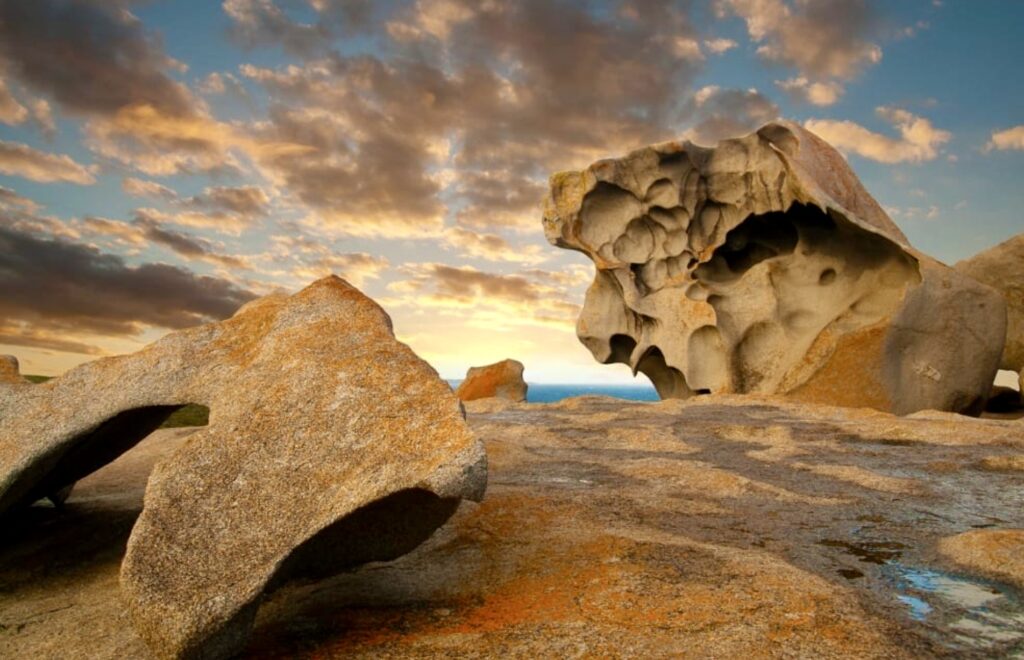
Today, Kangaroo Island seems to be something of a microcosm, that is if anything covering 4,405 sq kms could be considered micro. Perhaps a living laboratory would be a better description, or nature’s own ark, because there are creatures here that exist nowhere else on Earth. In the pristine waterholes of Rocky River South Australia’s only wild platypus population thrives, while the island’s short-beaked echidnas roam without fear of significant predators. Most precious of all is the Kangaroo Island dunnart, a tiny marsupial whose entire world population of just 300-500 individuals calls this island home. It seemed ironic for me that I’d recently been in the Galapagos islands marvelling at exactly the same thing, and yet here it was in Australia, and only a 1000kms from home.


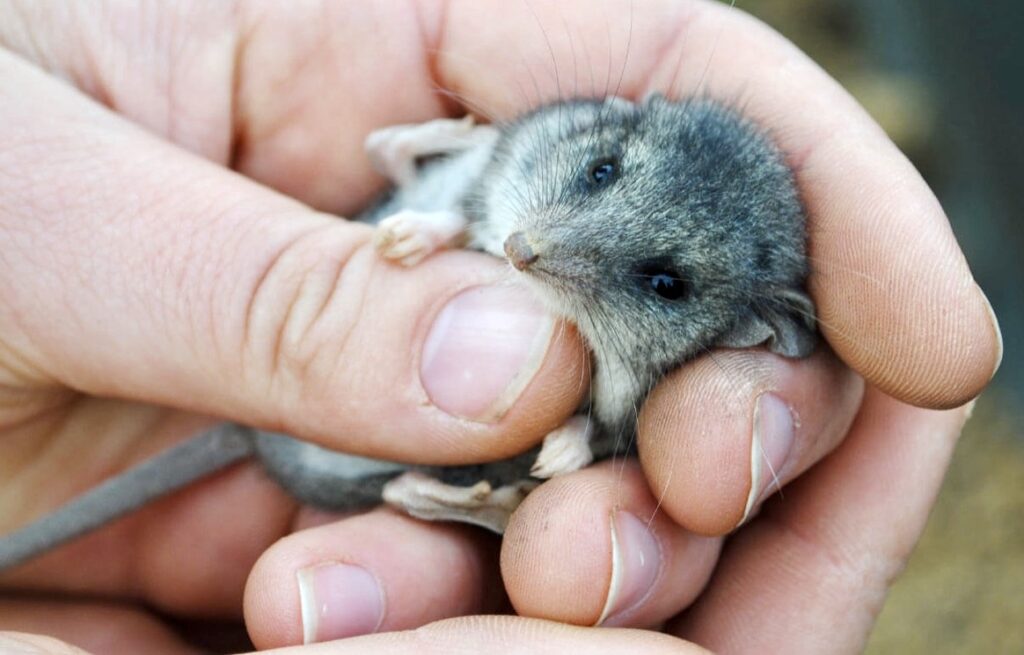
On a more sombre note, the devastating bushfires of 2019-20 tested this natural sanctuary’s resilience, particularly in Flinders Chase National Park where much of the unique wildlife resided and where as many as a third of the chlamydia-free koalas in Australia perished. Yet Kangaroo Island endures, as it has for millennia, a living testament to Australia’s natural heritage where the elements take their toll but somehow the natives endure, long may this be the case!

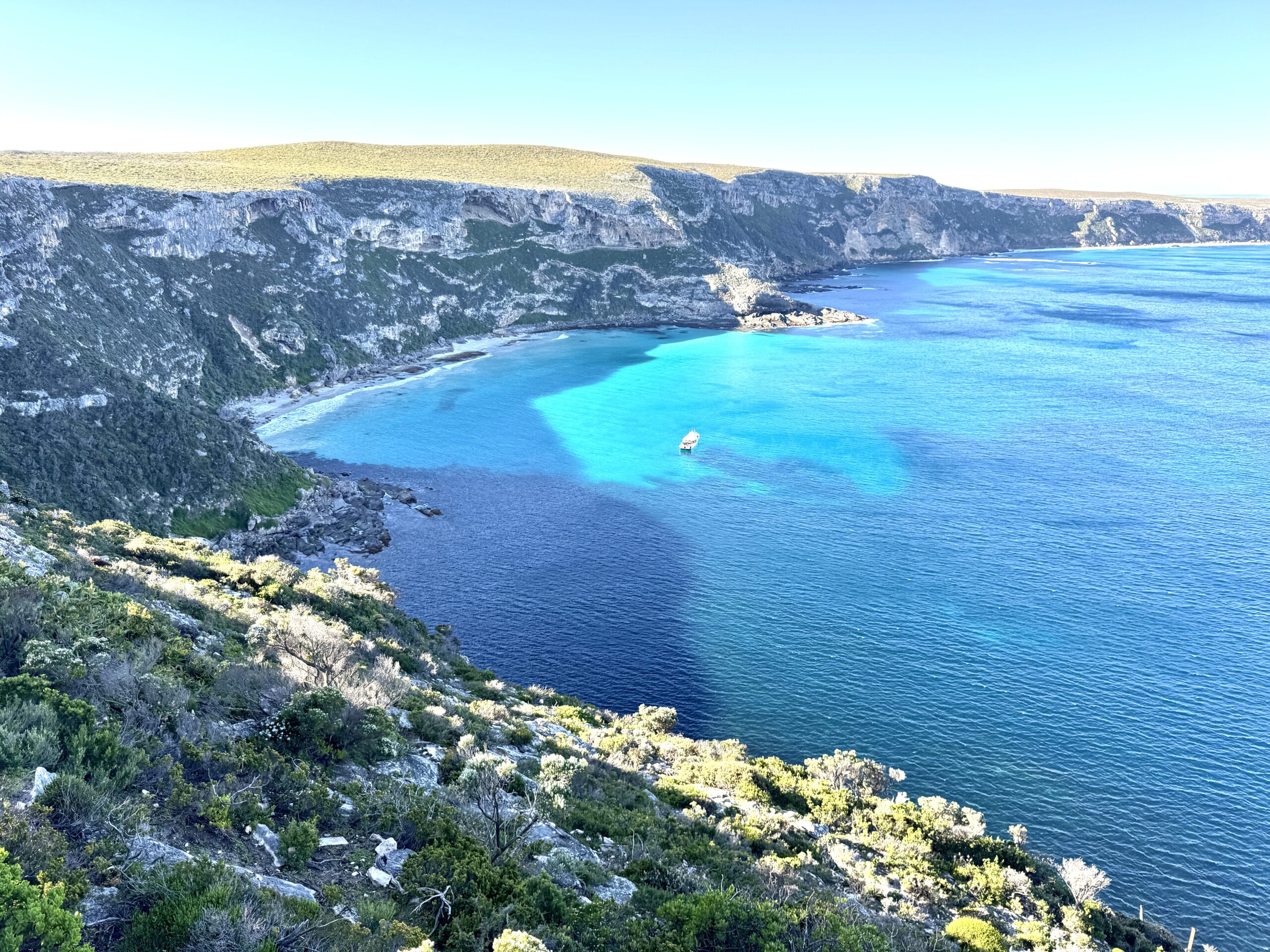
Notwithstanding the $400 car ferry fare I enjoyed my time on the island and ended up staying longer than planned because the weather turned and the ferry service was halted for a day, but it could have been worse, at one point they were saying the ferry would be cancelled for the next three days. That’s when you realise the downside of being on an island with only one way off! But then again I thought maybe this is part of the charm of living on the edge, where you learn to take things beyond your control in your stride.

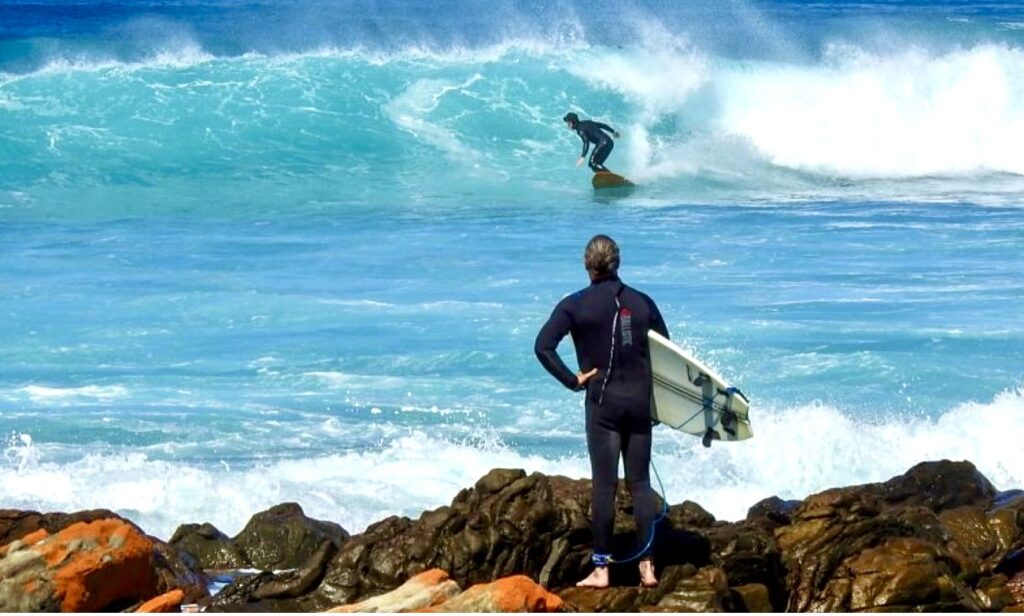
This was a lesson taught by an “old” salt I met called Bill, who as it happened was also of the fine 1955 vintage, and who is an islander born and bred. As a shearer he’s worked all over outback SA and Queensland and now chooses to spend his time surfing, fishing and shearing a few of the island’s sheep when needed. He spends most of his time on his small farm on the west coast while his wife lives in Kingscote, but that seems to work for them both and he seems one of the most contented people I’ve met. In fact when it looked like I was going to be stranded he offered for me to stay at the farm with him.
The only unsettling thing Bill said to me was when we got onto the subject of sharks, and in this regard he told me several stories of close encounters, and friends lost, that made my toes curl. While he’s philosophical about the risks he does take all the precautions he can to avoid becoming a white pointer entree. He has electronic transponders that are supposed to repel sharks (and which evidently give the surfer an electric shock if they’re not wearing rubber booties), he has eyes painted on the bottom of his board because evidently sharks don’t like to be seen, and he’s painted black and white stripes on the bottom of his other board because evidently sharks read this as an orca—the only thing it seems that a great white is scared of and the only thing that sits above them on the apex predator tree.
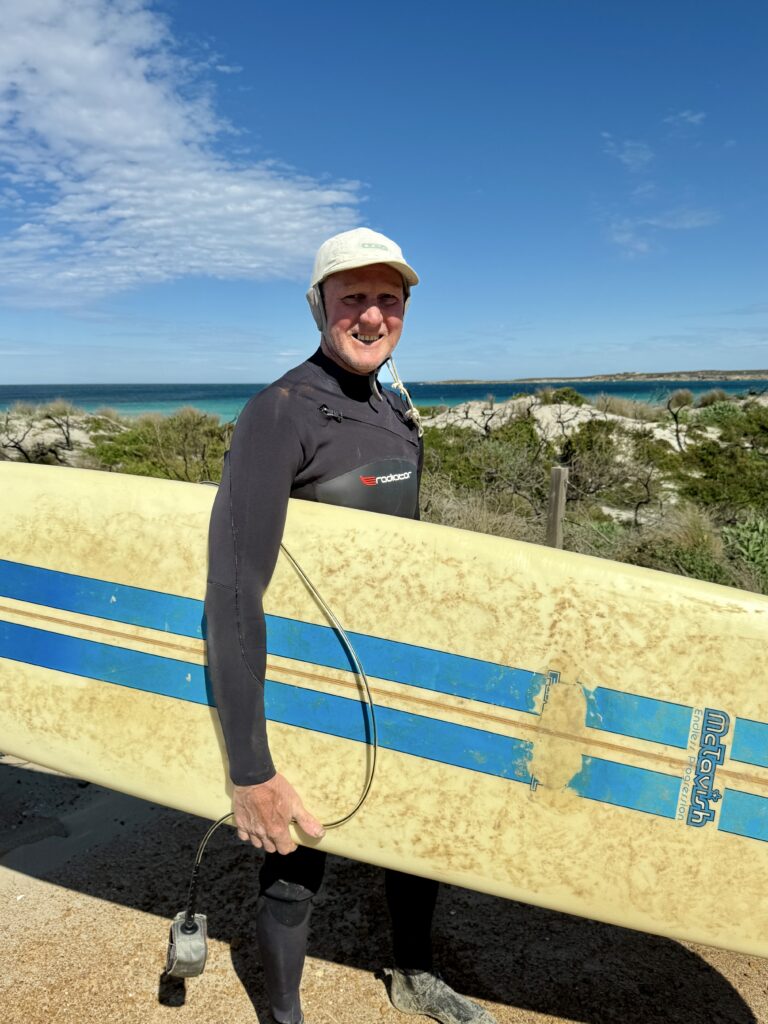
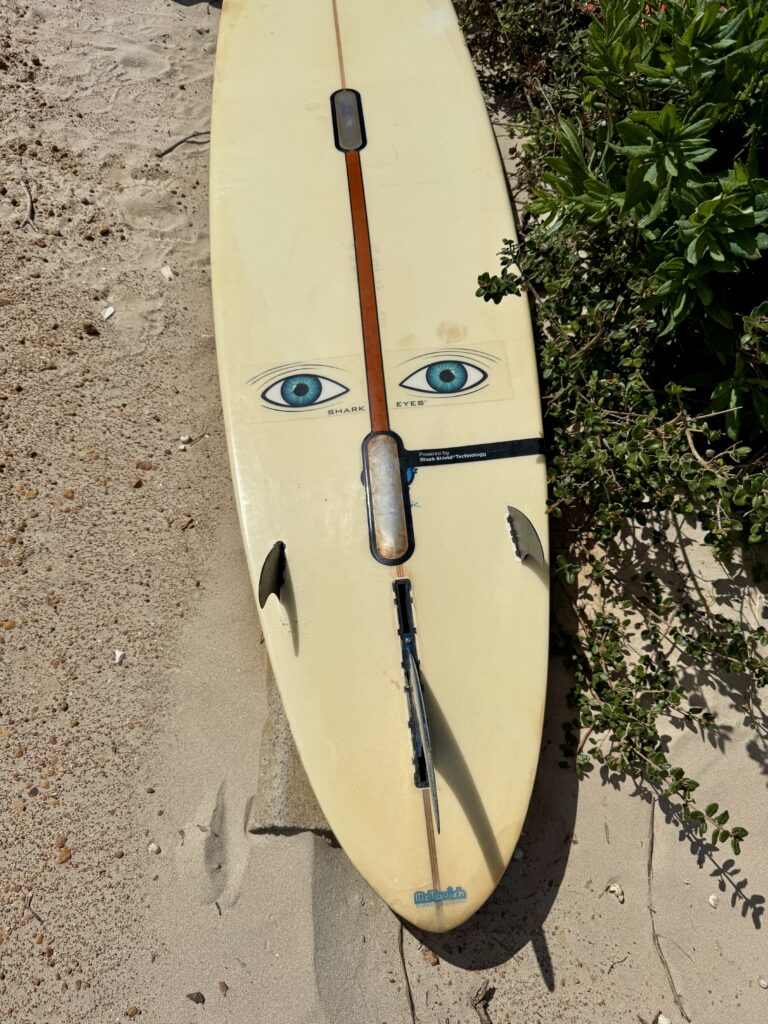
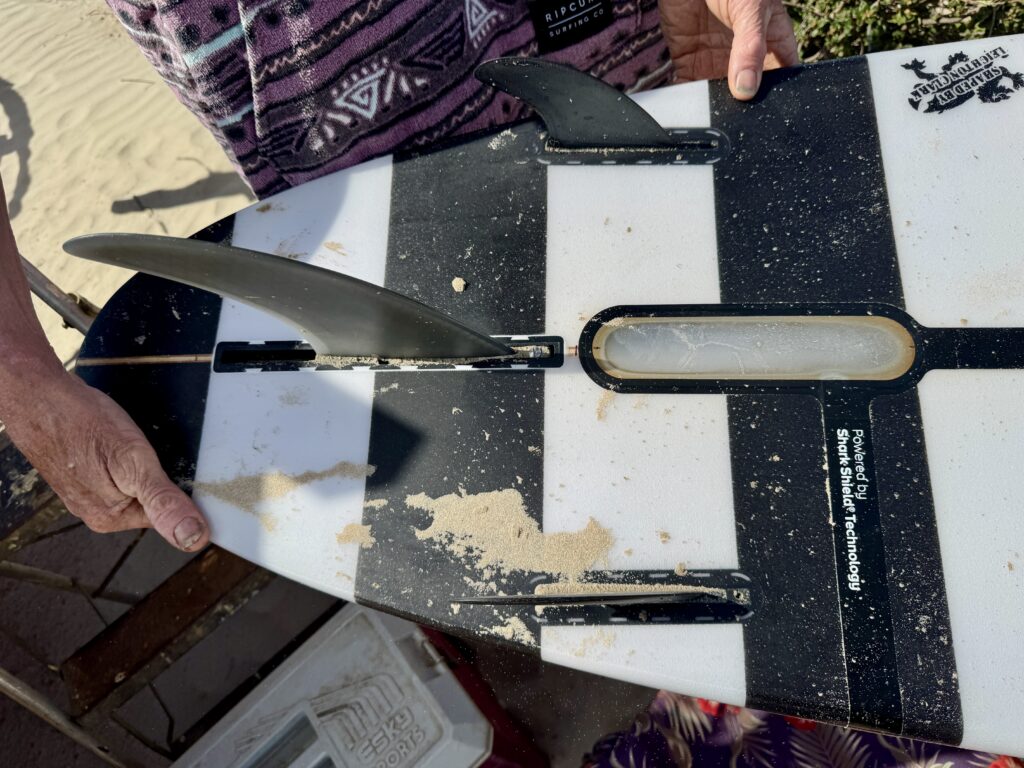
So as enticing as the ocean looked and as much as I would have liked to take a dip, the wind had swung onshore and the temperature had dropped about 10 degrees and I heard I was on the next morning’s ferry which meant I couldn’t stay with Bill and was strangely disappointed not to be stranded!
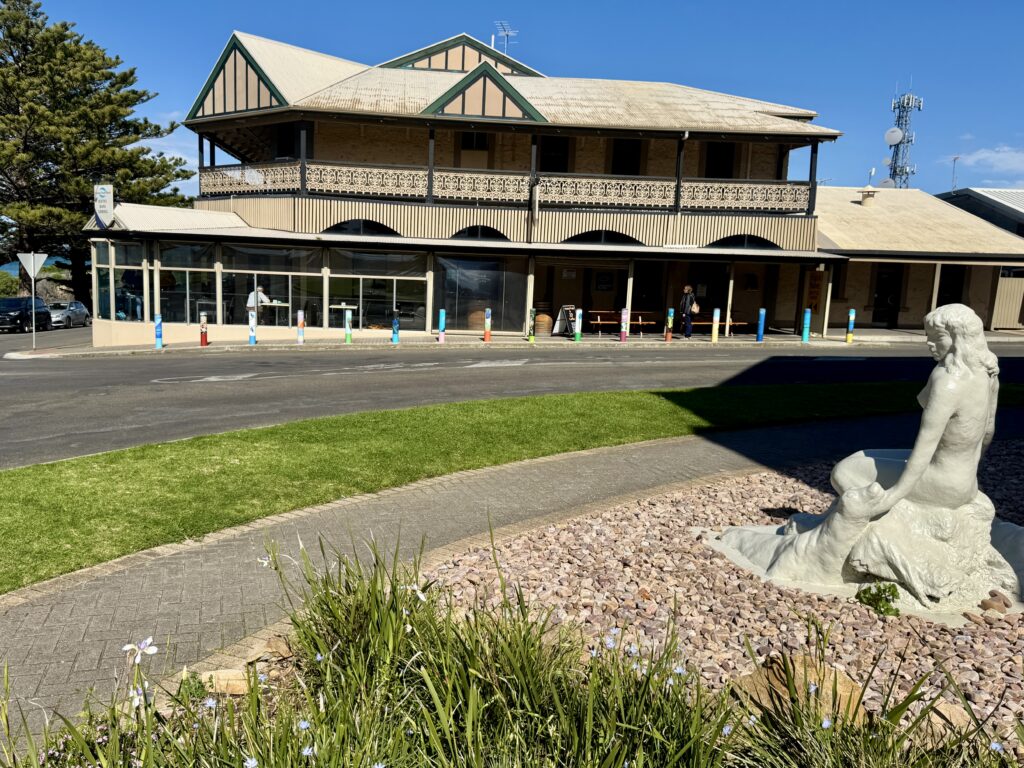
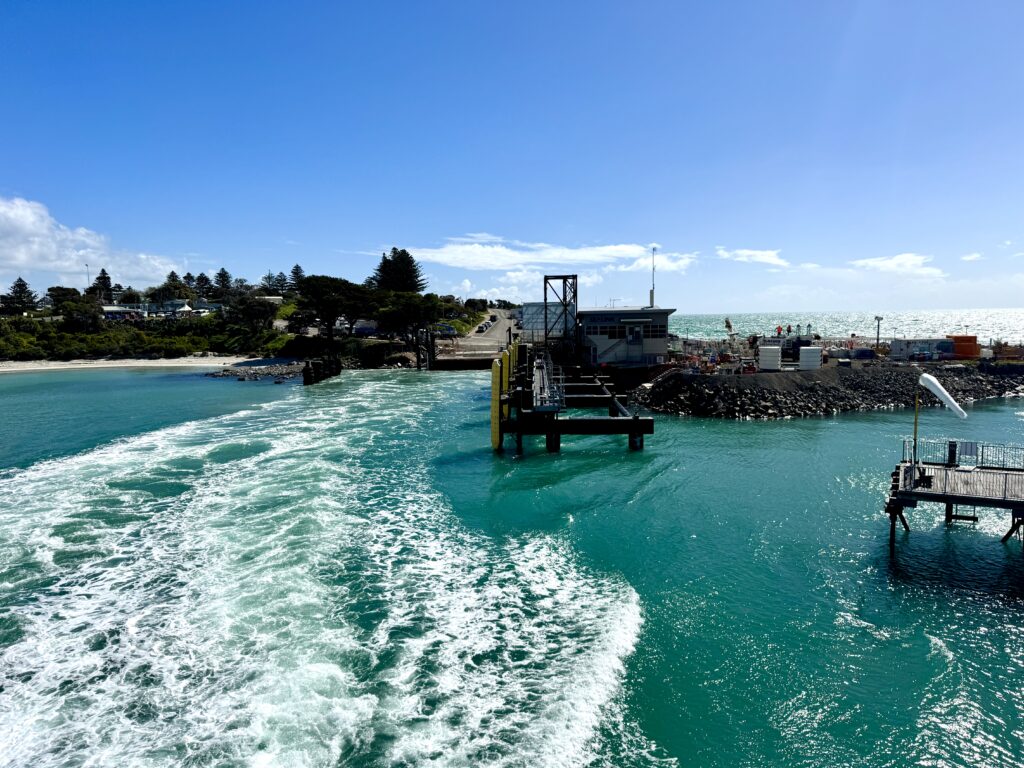
p.s. This visit also reminded me of a joke Sir Peter Ustinov told when I was lucky enough to see him in person at the State Theatre in Sydney in 1990 which went something like this, but said in his magnificent booming voice… and forgive the historical inaccuracies regarding the characters… “As Captain Cook was standing on the poop deck of the Endeavour gazing at the shore he noticed a strange animal hopping along the beach so he turned to Bennelong and said “My good man Bennelong what pray tell is that thing” to which Bennelong replied “kan-ga-roo sir”, and from then on that’s what it’s been called. However, it wasn’t until many years later when the local Aboriginal dialect had been translated that it was discovered that “kan-ga-roo”n actually means “F**ked if I know”!” I liked it then and still like it now!
